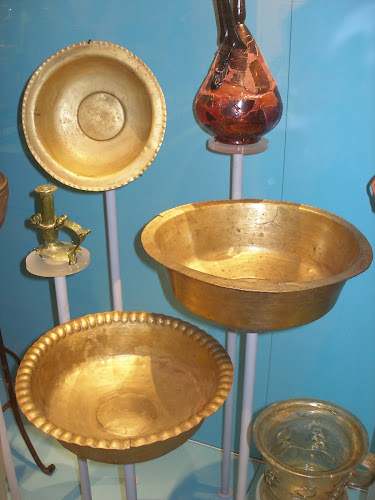The Higgins Bedford’s current exhibition, Under the Same Sky, showcases artistic interpretations of the skies above, this includes a variety of snow scenes, which demonstrate how snowfall alters our perspective of our surrounding environments. These works capture the chill of the blanketed landscape; the all-consuming white of snow drifts could have proved a challenge for some artists, but here we see how negative space and the absence of pigment has been utilised to portray snow drifts. Regrettably these works have all been “put to bed” for the third time this year, as Bedfordshire is now in Tier 4, so we will have to settle with a digital dose of festive snow scenes instead.
Arthur Anderson Fraiser
Fenlake, 1889
 |
| Arthur Anderson Fraiser (1861 - 1904), Fenlake, 1889, © Cecil Higgins Collection (The Higgins Bedford) |
Firstly we have a beautiful watercolour by Bedford born artist, Arthur Anderson Fraiser. Born into a family of landscape watercolourists, the Fraser family produced numerous scenes of the rural East of England, with Arthur having a specific interest in the tranquil, depicting many scenes along the River Great Ouse. Although he was self-taught, Arthur gained national acclaim for his landscapes, exhibiting works at the Royal Institute of Painters in Watercolour.
Fenlake is a snow day that many of us would recognise, a scant blanket only hours away from being slush. Frasier’s snow scene shows the emergence of greenery beneath the frost, suggesting an oncoming spring. The grey sky above could be considered bleak in other conditions but snow fall always manages to add a picturesque charm to the scenery.
Ker-Xavier Roussel
L’Education du Chien (Training the Dog), 1893
 |
| Ker-Xavier Roussel (1867 - 1944), L'Education du Chien (Training the Dog), 1893, © Cecil Higgins Collection (The Higgins Bedford) |
Roussel was a painter and lithographer with links to Les Nabis, a French Post-Impressionist group whose work is often characterised by flat planes of colour and a simplicity of line. Their name was derived from the Hebrew word for prophet. There was a spiritual nature to the group’s principles, as they aimed to revitalise painting as ‘prophets of modern art’, believing that painting was the harmonious grouping of colour and line.
It is this simplicity of line and shape that it utilised in L'Education du Chien, with the negative space alluding to snow drifts, and loose lines depicting a chaotic path made by the unruly dog. With its block colour and stylised composition, this print is reminiscent of Japanese woodblock prints, which were considered fashionable throughout Europe in the late 19th century, and comparisons can be made to the snow scenes by Hiroshige.
Much like Fraiser in his snow scene, Russell uses blue tones to suggest a sense of biting cold. In the blue faces of the women pictured, you can’t help but recall bitter winds and numb noses from venturing out into the winters cold. The Les Nabis were big believers in colours being instrumental in conveying experience.
Paul Nash
Snow Scene, c.1943
 |
| Paul Nash (1889 - 1946), Snow Scene, c.1943, © Trustees of the Cecil Higgins Art Gallery (The Higgins Bedford) |
Paul Nash played a vital role in the development of British Modernism, primarily producing landscapes throughout his artistic career. He is perhaps most well-known for his symbolic war landscapes. His decorative manner of painting, which is present in the works he produced during the First World War, developed into the abstract style which can be seen in Snow Scene, and uses planes of colour and a limited pallet to represent drifts of snow and bowing branches of trees.
Snow Scene would have been painted towards the end of Nash’s life, when he was suffering from a decline in his health due to chronic asthma, a condition that resulted in his death. Although housebound, his love for landscape prevailed, working with a pair of field glasses to sketch the landscapes from his window. In this painting, I think we can share the comfort of viewing the cold weather from the warmth of the indoors.
Under the Same Sky will be on display when The Higgins Bedford reopens until 21st April 2021.
Written by Hannah White, Curatorial Volunteer
Bibliography:
https://www.artgallery.nsw.gov.au/collection/artists/fraser-arthur-anderson/?tab=profile
https://www.tate.org.uk/art/art-terms/n/nabis
https://www.tate.org.uk/art/artists/paul-nash-1690/landscape-mortality

































